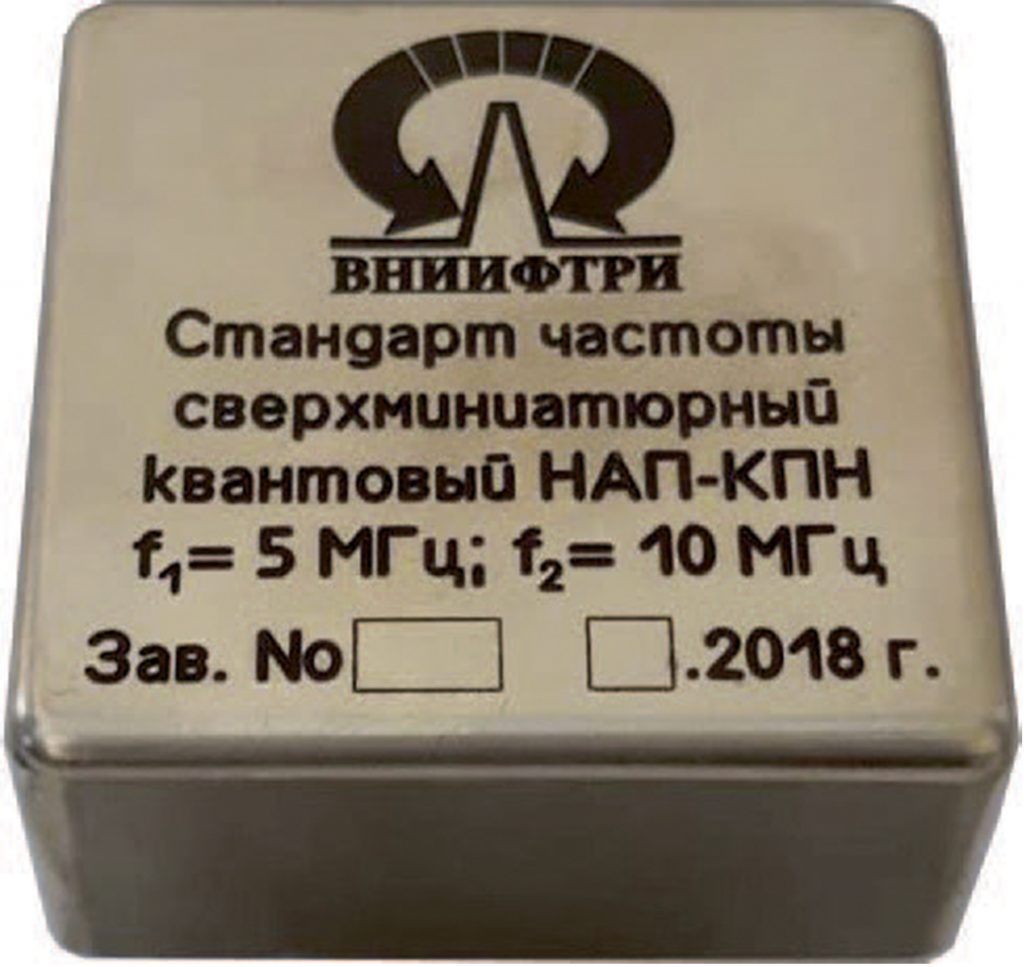COMPONENTS
- emitting laser
- photodiode
- thermal stabilization system
- integral gas cell
- frequency standard control system
FIELDS OF APPLICATION
- satellite navigation systems, including those integrated with inertial navigation systems
- synchronization of equipment and data transmission in high-speed computer networks
- communication systems, including broadband communication with fast carrier switching and wavelength-division multiplexing
- precision measuring equipment with strict requirements for the reference frequency generator (spectrum analyzers, vector generators, oscilloscopes, etc.)
Advantages (based on CPT compared to other small-sized standards): - the possibility of reducing the size of the entire standard, as well as achieving low power consumption, since there is no need for a huge microwave resonator and implementation of subminiature MEMS gas cells and VCSEL lasers
- low short-term frequency instability
- low long-term frequency instability
OPERATION
The standard frequency is stabilized due to the effect of coherent population trapping (CPT). As a result of microwave modulation of the laser frequency, harmonics of the ± 1-order appear in the laser spectrum, which interact directly with the alkaline metal atoms in the gas cell. When the difference frequency between the harmonics is equal to the hyperfine splitting frequency of the ground state, a coherent nonabsorbing superposition of the atomic ground states arises. This effect is called CPT.
SPHERES OF APPLICATION
It can be used as an element of navigational-temporal devices for equipment requiring predicted time information.
Application area: a highly stable source of reference signals as part of the consumers equipment of navigation systems, measuring instruments and other radio-electronic equipment (telecommunication networks and high-speed communication systems, scientific equipment, equipment for ensuring precision measurements).
| Dimensions | 60 cm3 |
| Power consumption | 800 mW |
| Output frequency | 5 and 10 MHz |
| Short-term frequency instability (for 1 s) | 3 × 10-11 |
| Long-term frequency instability (for 1 day) | 5 × 10-12 |






